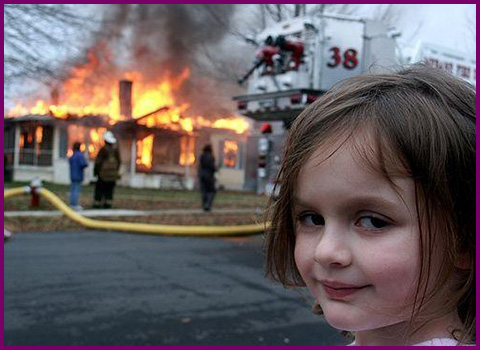

#10, 2017 Skandies
Oof. I like Emily Dickinson fine. I’ve taught her work in my AP Literature class. I lived in the Amherst area for four years and have been to her house. I was looking forward to this biopic about her. But the way all the actors in this movie recite their lines… I could only take those artificial cadences for half an hour or so. Unwatchable—or, rather, unlistenable.


#8, 2017 Skandies
And then you have this, which feels startlingly real. It is mostly about children playing, and I was floored by how true to life the children’s conversations were, both in what they were saying (e.g., “If I had a pet alligator I would name mine Ann”) and in the cadences of their speech. These kids sounded as natural as the Quiet Passion actors sounded artificial.
This movie felt simultaneously deeply foreign to me and deeply familiar. It is set at a cheap three-story motel in Kissimmee, Florida—cheap as in “$38 a night”, so about half the rate of a Motel 6—and it turns out that most of the “guests” actually live there. They are tatted-up strippers, Waffle House cashiers, unemployed grandmothers raising their teenage daughters’ kids, etc., from a wide variety of backgrounds, clinging to the last stop before moving into their car or onto the street. Their kids (and there are a lot of kids) all play together, and by “play” I mean that they run around the neighborhood—a stretch of busy, pedestrian-unfriendly highway that the city planning videos call a “stroad”, crammed with other cheap motels and working-class shopping centers—and have adventures. They poke around abandoned condo complexes, wander out to undeveloped marshy fields and moo at the cows, go to the soft-serve ice cream stand and (successfully) wheedle for change to buy a cone to share. (Actually, the kids do most of the food “shopping”, grabbing free bread and jam from church charity vans, begging for leftovers at the back of the Waffle House, etc.) I gather that this is supposed to look bizarre for a movie set in the 2010s—packs of semi-feral children roaming around unaccompanied, instead of being ferried in SUVs from their Xboxes to soccer practice and back—but I grew up in the 1970s and ’80s, and what these kids do was what playing was like for me, too, when I was these kids’ age! When I was four and five, my family lived in lower-middle-class apartment complexes, and yeah, I would go outside and find the pack of kids who lived there and we’d wander around the parking lots and building lobbies, climb trees and roll down hills amounting to maybe two feet in elevation, and feel like we were having epic adventures. When I was six, we moved to an affluent exurb in California, but playing remained the same: it was easy to find a pack of kids either on my street or at school, and we’d wander for up to a mile, looking at the new houses that were going up, climbing the (much taller) hills and walking along the drainage ditches, and having conversations in shrieky child voices like the six-year-olds in The Florida Project. It is fascinating to me that what read to me as markers of a normal childhood, one that’s probably healthier than the antiseptic quarantine in which most American kids live in the 21st century, are now taken as markers of poverty.
The poverty also looked simultaneously foreign and familiar to me. Like, this motel complex is a bad scene. There’s a bedbug problem, the coin-op dryer is out of order, there are guys selling drugs and women turning tricks out of the rooms, and police cars and ambulances are regular visitors. (One of the main supporting characters is the motel manager, trying his best to stay on top of this stuff.) I’m fortunate to be able to say that I’ve never lived like this, but I’ve done a lot of road trips in my time, and I don’t always stay at the Ritz-Carlton. I’ve spent a lot of nights at the Motel 6, and many of the scenes here triggered cascades of memories. As for the neighborhood: Florida is one of the eight states I still haven’t been to, but the thing about suburbia is that it looks pretty much exactly the same from sea to shining sea. There are richer and poorer areas, and I feel like I’m equally familiar with both. Sure, I’ll go to a swanky shopping center with a Tesla dealership and a Salt & Straw, but on the same day I might find myself poking around a Dollar Tree or a Grocery Outlet in a strip mall very much like the ones in this film. And while we might recognize that these kids are having a deprived upbringing, they seem not to. They’re having fun! They have friends, they have toys, they have adventures. They have TV, and watching TV feels like a bubble of safety no matter where you are. There are magical moments, like a magnificent rainbow stretching across the sky, or a flock of pelicans ambling onto the property. A lot of movies about poverty feel like they’re trying to give us snapshots of the apocalypse. But while the poverty in The Florida Project is equally dire, these scenes feel like they’re just slices of a pretty recognizable life.
And while this is mostly a slice-of-life film, a plot does eventually get underway. The main disordering incident comes about midway through the movie, as one of the kids gets hold of a lighter, and during one of their visits to the abandoned condos, they spot a fireplace and decide that relaxing by a cozy fire would be just the thing. And:

Again, that could have been me: I distinctly remember being four years old, spending a long stretch staying at my adoptive grandparents’ house, and having my mom send me out to the car to retrieve her lighter and cigarettes… and I spent a long moment thinking about setting the house or the lawn on fire, just to see what it would be like. At four I had developed just enough inhibitions to decide against it. Anyway, the fire leads to a break-up of the pack, as some of the parents decide that some of the kids are a bad influence, and we end up focusing more narrowly on one kid in particular, a girl named Moonee, as her mother’s situation becomes more and more precarious. The mom is basically a bratty middle schooler in a 23-year-old’s heavily inked body, and she takes Moonee along to fancier motels to hang around out front, pestering people coming in and out to try to sell them gray-market and outright stolen merchandise… and that’s just an early step in a long descent. I don’t want to spoil too much, but I feel like I have to say something about the ending, which some loved and some hated—to cite the two critics I regularly read, Outlaw Vern called it “laughably ridiculous”, while Mike D’Angelo cited it as a moment to “adore”. Put me in the “adore” camp. See, this movie doesn’t take its name solely from the fact that it is about kids growing up in the equivalent of the projects in Florida: “The Florida Project” is what Disney’s internal memos called Walt Disney World when it was in its planning stages. Kissimmee is a suburb of Orlando, and the strip malls the kids run around in are full of stores selling Disney memorabilia. Now, again, I’ve never been to Walt Disney World, or Orlando, or Florida. But to play upon a Disney resort as a hollow symbol hit home for me. That exurban neighborhood in California where I grew up? It was in Anaheim.
(Addendum 2022.1106: more on this movie here.)
|
|

|
|
|
 |
 |
 |
 |
||
|---|---|---|---|---|---|
Tumblr |
this site |
Calendar page |


